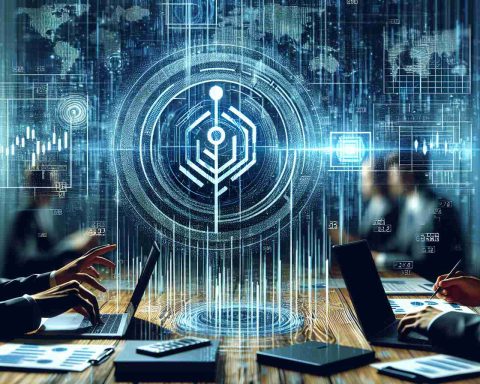A new era of technological advancement is dawning as companies join forces to propel the growth of national AI semiconductor industry. From AI chip validation to workforce development, a comprehensive collaboration framework between businesses and universities is being established. Recently, a symbolic agreement for the advancement of domestic AI semiconductor industry was signed at Daegu City Hall.
In a strategic move, Daegu City has partnered with top Korean AI semiconductor companies such as FuriosaAI to enhance the capabilities of domestic semiconductor industry and strengthen Daegu’s semiconductor sector. Recognizing the global acceleration of the AI chip competition, governments worldwide are focusing on securing technological prowess in the AI semiconductor sector.
The companies participating in this collaborative effort are leading the way in developing Neural Processing Units (NPUs) that are not just faster than Graphic Processing Units (GPUs) but also energy-efficient. Daegu City is committed to supporting the commercialization of these NPUs, facilitating the establishment of AI data centers in the city, and providing necessary resources to ensure successful validation outcomes.
In anticipation of the burgeoning AI semiconductor market, Daegu City plans to actively support software development by collaborating with local universities and businesses to refine NPUs and Software Development Kits (SDKs). The establishment of an AI semiconductor software support center in Dongdaegu Venture Valley is also on the horizon, signaling a strong commitment to fostering the growth of AI semiconductor industry.
Mayor Hong Joon-pyo expressed his confidence in Daegu’s potential as a city equipped with exceptional talents in digital and advanced manufacturing industries. He envisions AI semiconductor industry as a driving force for economic growth in the southern region, and pledges full support towards harnessing this new frontier of technological innovation.
Pushing the Boundaries of AI Semiconductor Technology: Unveiling New Frontiers
As the landscape of AI semiconductor industry continues to evolve, there are intriguing facets emerging that shed light on the future trajectory of technological innovation. Here, we delve into some critical questions and aspects that are pivotal to this domain:
1. What Are the Latest Breakthroughs in AI Semiconductor Design?
Advancements in AI semiconductor design are pushing the boundaries of speed and energy efficiency. Companies are now focusing on developing Neural Processing Units (NPUs) that not only outperform Graphic Processing Units (GPUs) but also consume less energy, revolutionizing the capabilities of AI-powered devices.
2. What Key Challenges Does the AI Semiconductor Industry Face?
One of the key challenges facing the AI semiconductor industry is the need to continuously innovate and stay ahead in the global competition. Ensuring the reliability and security of AI chips, as well as addressing ethical concerns related to AI technologies, are also pressing issues that demand attention.
3. What Are the Advantages and Disadvantages of AI Semiconductor Technologies?
The advantages of AI semiconductor technologies lie in their ability to significantly enhance the speed and performance of AI applications, leading to more efficient and intelligent systems. However, the rapid pace of innovation also poses challenges such as high development costs, technical complexities, and potential ethical dilemmas associated with AI implementation.
In light of these questions and considerations, it is evident that the AI semiconductor industry is at a crucial juncture, where collaboration, innovation, and foresight will play key roles in shaping its future.
For further insights into the dynamic landscape of AI semiconductor technology, you may explore the latest developments on Semiconductor Industry Website. This domain offers a comprehensive overview of trends, innovations, and industry updates that are driving the evolution of AI semiconductors.

















